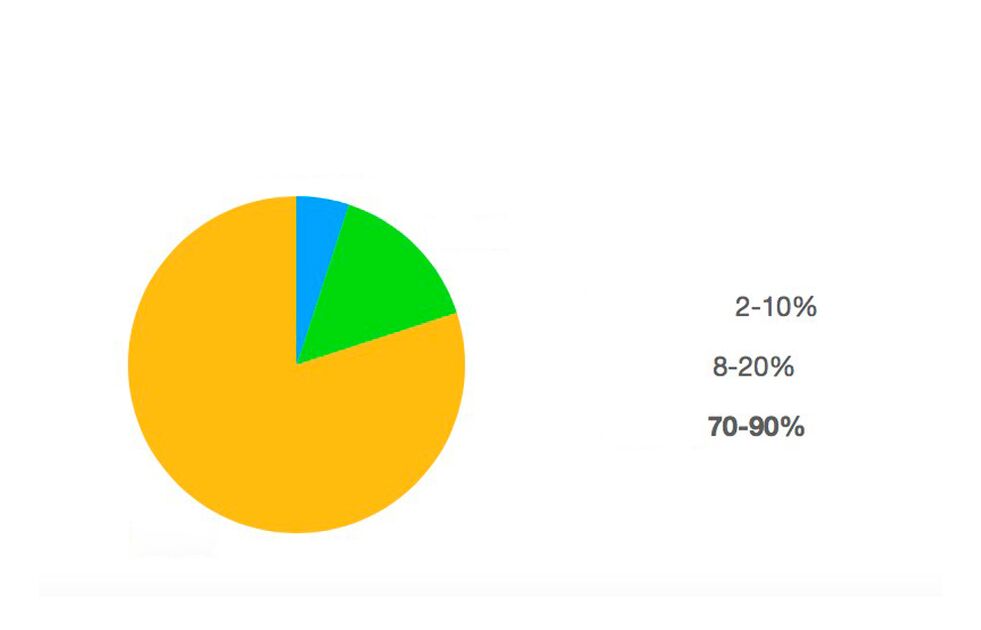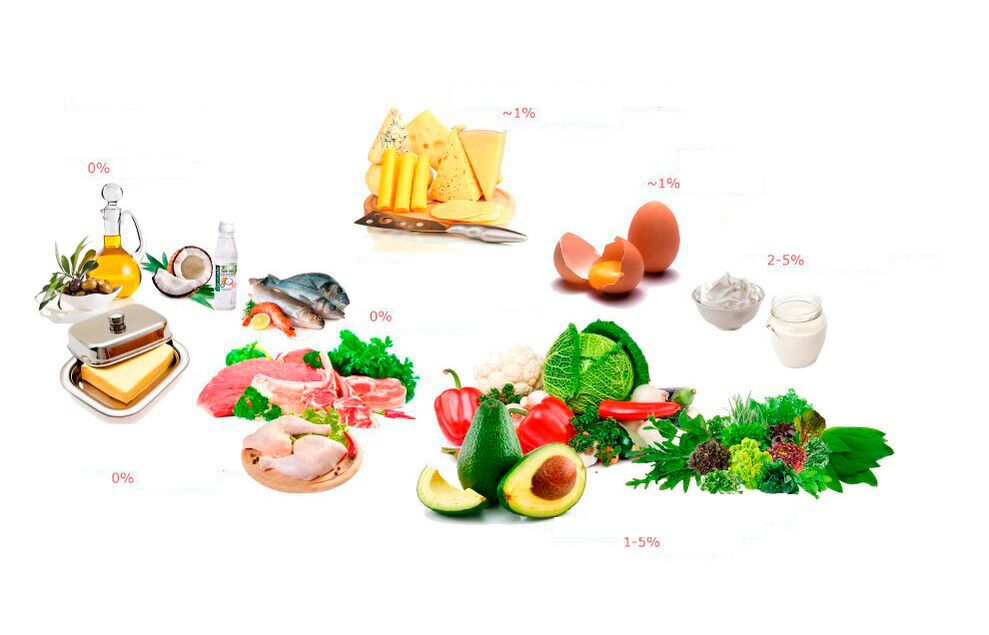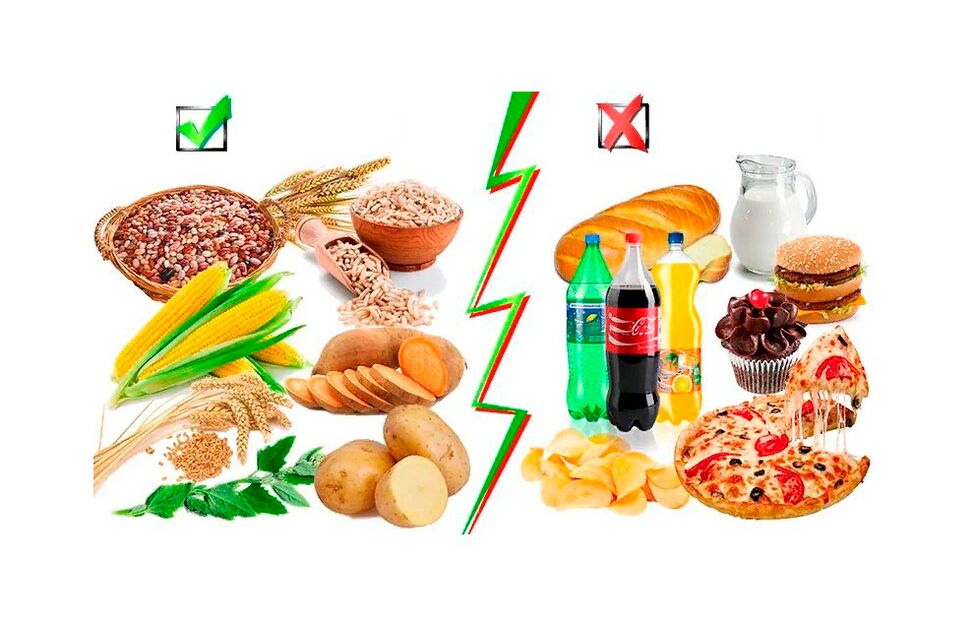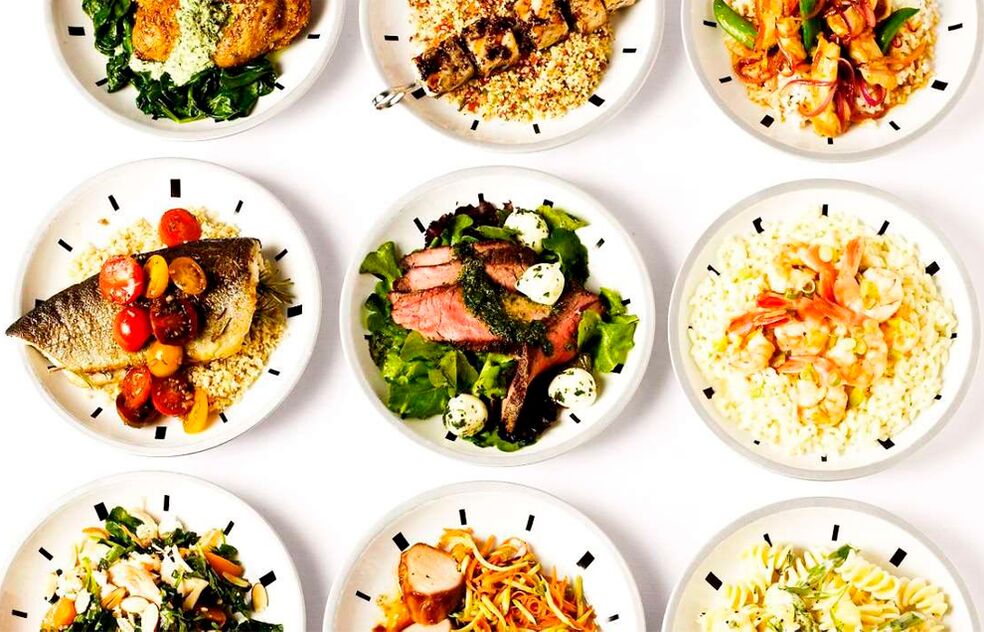A carbohydrate-free diet is an extreme version of a low-carbohydrate diet, where it focuses on protein, healthy fats, and fiber.
To provide energy for the body and brain, our bodies often use carbohydrates (glucose). Their reduction leads to a decrease in insulin production in the body, so as an alternative source, it begins to break down protein (storage muscle) and stored fat. This leads to rapid weight loss.
Depending on age, weight, physical activity, and goals (weight loss, muscle gain, body drying), the body requires different amounts of protein, fat, and carbohydrate (BJU). According to experts, the average daily consumption is as follows:
- 45-65% carbohydrates
- 20-35% fat
- 10–35% protein
With a low-carb diet, fat becomes the main source of calories and carbohydrates are reduced to 2-10%.

The general principles of a carbohydrate-free diet are as follows:
- Carbohydrate intake decreased from 0 to 30 grams per day.
- Make sure to drink at least 8-12 cups of water a day for toxins to be eliminated from the body.
- Since most diets consist of protein and fat, you need to focus on their benefits. It's important to cut back on trans fat consumption and not overdo it. For example, a 2018 study argued that a low-carb diet that prioritizes plant-based proteins and fats over animal sources is associated with lower mortality. Think not only about cutting your waistline, but also about your long-term health.
- Completely avoiding carbohydrates is nearly impossible, as they are found in many foods. But first, avoid those with a glycemic index above 50.
The most popular low-carb diet today is the keto diet, where the BJU ratio is 75% fat, 20% protein, and 5% carbohydrates. In addition, one of the most famous and popular diets is the Duncan diet, the basis of a protein-containing diet.
Advantages and disadvantages of the Carbohydrate diet
Any diet has limitations and stresses, so before experimenting with a diet, it's important to evaluate all the pros and cons of a future regimen.
Benefits of a carbohydrate-free diet
- Replacing carbohydrates with protein affects the hunger hormone ghrelin, making you feel full and possibly reducing snacking and daily calorie intake.
- Weight loss in the first few weeks will be rapid. This is mainly due to reduced fluid intake. Carbohydrate-rich foods not only contain a lot of water, but also excrete it through metabolism. This is why a no-carbohydrate diet is often chosen by people who are trying to lose weight quickly. A study of 79 obese adults found that for 6 months, those who restricted their carbohydrate intake to less than 30 grams per day lost about 4 kg more than those who restricted their fat intake instead.
- Carbohydrate intake has a significant impact on blood sugar and insulin levels. Excess glucose is linked to many health problems such as type 2 diabetes, cancer, and cardiovascular disease. A low-carbohydrate diet reduces the likelihood of these occurrences.
- According to research, a carbohydrate-free diet can reduce the symptoms of Alzheimer's disease and slow the progression of the disease.
Disadvantages of a no-carbohydrate diet
- By reducing carbohydrate intake, insulin levels decrease and the hormone glucagon increases, causing the body to burn fat. However, when the body switches to this form of fat burning, a process called ketosis occurs and compounds called ketones build up in the body. This process can cause side effects including nausea, headaches, bad breath, fever, sleep disturbances, and more. v. In addition, fatigue and sleepiness are common. As a result, problems arise in everyday life, including a significant reduction in the number of training sessions and a decrease in the quality of their performance.
- Low-carb diets inevitably lead to a lack of fiber. Many studies show that the activity of beneficial bacteria in our gut when we consume fiber is essential for overall health. Bacteria act on fiber to form short-chain fatty acids that prevent the growth of harmful bacteria, maintain gut health, and have anti-inflammatory and antibacterial effects. In addition, such a diet can hardly provide the necessary amount of vitamins for the body, namely groups B and C, and minerals such as potassium.
- Prolonged adherence to the diet can increase the risk of high cholesterol, osteoporosis, irregular heart rhythms, and kidney problems.
- The most common side effects of a carbohydrate-free diet are constipation or indigestion.
Who is the low carb diet right for?
- People with diabetes or chronic diseases need to closely monitor their blood sugar.
- People with problems with the cardiovascular system, blood pressure and digestive tract.
- Pregnant and lactating women.
- Elderly people, adolescents and people with low body mass index.
- People with food-related emotional or psychological problems, including eating disorders.
Before trying a carbohydrate-free diet, check with a professional to make sure it's not doing you any harm.
A general guide to eating a carbohydrate-free diet
Low-carbohydrate foods mainly include oils: coconut, butter or buttermilk, olives (virgin), avocado oil, etc. v.
While all oils and fats are zero or minimal carbohydrates, not all are healthy. Some oils are processed and contain chemicals. Additionally, most vegetable oils are high in omega-6 fatty acids, which can cause inflammation if consumed in excess. These fats may also inhibit the anti-inflammatory activity of other fats, such as omega-3s.
For this reason, it's best to avoid oils that are high in omega-6 fatty acids like soy, corn, canola, and peanut butter.

Since the diet will be mostly meat, consisting mainly of proteins and fats, make sure it is of high quality and ideally organic, with no additives, as their main purpose is to increaseenhance the taste and prolong the shelf life of the product. Try not to buy processed meat products. Many manufacturers add sugar, spices, and flavorings to increase carbohydrate intake.
Although dairy products contain carbohydrates (sugar in the form of lactose), most of them are insignificant. Yogurt can be used to provide protein, calcium, vitamin D and potassium. Milk and yogurt are the foods that contain the most carbohydrates, but if you're not ready to cut them out completely, choose products with no added sweeteners or flavors, and it's important to keep an eye on the numbers. portion quantity.
Pay special attention when preparing food. For the diet, use recipes that involve boiling, stewing, steaming. Baking is very useful. And it's better to give up fried foods altogether.
You also need to choose foods with a low glycemic index (up to 50). They are packed with slow carbohydrates that take a long time to break down and give you a feeling of fullness. In general, it is worth remembering that they are fat not from carbohydrates but from an excessively high-calorie diet and a sedentary lifestyle.

What foods should be eaten and avoided on a carbohydrate-free diet?
Healthy foods low in carbohydrates
- Low-carb meat and animal products: chicken, beef, turkey, lamb, pork, eggs, butter, cheese
- Seafood: salmon, catfish, cod, shrimp, sardines, herring, anchovies, trout
- Spices: herbs and spices
- Low-calorie drinks: water, black coffee and tea
- Nuts (Low Carb): Almonds, Walnuts, Pumpkin Seeds, Sunflower Seeds, Pistachios, Cashew Nuts
- Non-starchy, high-fat vegetables and fruits: broccoli, zucchini, bell peppers, eggplant, cucumbers, cauliflower, leafy greens, Brussels sprouts, celery, asparagus, mushrooms, coconut, butter
Foods to avoid
The carbohydrate-free diet restricts and excludes several food groups, including:
- Grains and cereals: rice, barley, quinoa, wheat, bread, pasta
- Sweets and cakes: cakes, cookies, candies
- Carbonated and sugary drinks
- Fruits and berries: apple, orange, banana, kiwi, pear
- Starchy vegetables: peas, corn, zucchini, potatoes
- Legumes: beans, chickpeas, lentils, peas
- Dairy products: milk and yogurt
- Condiments with added sugar: ketchup, barbecue sauce, salad dressing
- Alcohol: beer, wine, liquor, sweet cocktail, wine, vermouth, vermouth
Carbohydrate-free menu for a week
Despite the fact that the list of available foods has been significantly reduced, the diet can be very diverse. Example of a daily carbohydrate-free diet menu.
Monday
Breakfast: omelette with mushrooms
Lunch: beef broth
Dinner: Baked turkey fillet with asparagus
Tuesday
Breakfast: flaxseed bread, guacamole and hard-boiled egg
Lunch: miso soup
Dinner: zucchini baked in the oven with cheese
Wednesday
Breakfast: salad with salmon and avocado
Lunch: broth with chicken balls
Dinner: pasta with bacon and cream sauce
Thursday
Breakfast: salad with chicken, cucumber, feta and spinach
Lunch: elegant noodles with steamed chicken cutlets
Dinner: Peppers stuffed with seafood
Friday
Breakfast: curd stew
Lunch: mushroom soup
Dinner: steak and greens
Saturday
Breakfast: eggs with bacon
Lunch: brown rice with salmon
Dinner: stewed cabbage with meat
Sunday
Breakfast: oatmeal with some almonds and hard-boiled egg
Lunch: boiled chicken with green beans
Dinner: seafood and green salad

Remember, a complete and long-term ban on carbohydrate consumption is extreme, and extreme dietary habits don't work. A proper diet should be balanced and contain all the necessary vitamins and nutrients for the body to function effectively. Experts have mixed reviews about low-carbohydrate and low-carbohydrate diets, but they all agree that such diets should be short-term and should be followed for no more than 2 consecutive months.














































































